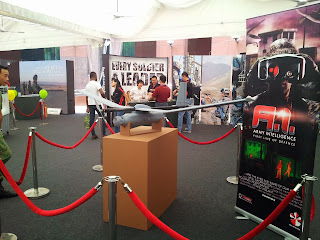Aster 30
I-Hawk, standing down after 30 years
The announcement that the RSAF would be replacing the American I-HAWK system with the European Aster 30 surprised me, but more on the surprise later.
One would imagine the Singaporean defence establishment thus has some familiarity with the Aster 30 system: The Singaporean Navy currently uses Aster 30 and Aster 15 missiles on its Formidable-class frigates. Aster 30s are designed to take care of air-breathing threats such as aircraft and helicopters while Aster 15 missiles handle incoming antiship missiles. There were murmurings about integrating the Navy's Aster's into Singapore's air defence umbrella, perhaps with ships launching from portside or not too far offshore. Evidently this came true in another fashion.
The I-Hawk's range is about 40 km, and the Aster is 120 km. Altitude numbers are not everything, but the RSAF's Air Defence Group once again has a long arm not seen since the days of SADA's Bloodhound SAM and its 85 km range.
All the best to the personnel of 163 Squadron - exciting times.
As mentioned, this did surprise me a bit - your author had been indulging in pipe dreams that the RSAF would acquire Israeli Arrows, David's Sling or the Iron Dome, especially since we had acquired the Spyder for low-level air defence.
On hindsight, I should have ruled out the Arrow and the Sling - these are theater ballistic missiles, really overkill in our context. I was looking too closely at Singapore-Israeli cooperation and the economies of scale for both nations.
David's Sling
Arrow
Now, your author mentioned the Iron Dome earlier, which was designed for C-RAM (counter rocket, artillery and mortar) fire and could be pressed into service against low-flying craft in a pinch. With the I-Hawks being gracefully retired; there is another RSAF squadron in the Air Defence Group that has been soldiering on with very "senior" albeit heavily upgraded weapons. This squadron specializes in short-range point air defence.
Perhaps something to keep an eye on?
















